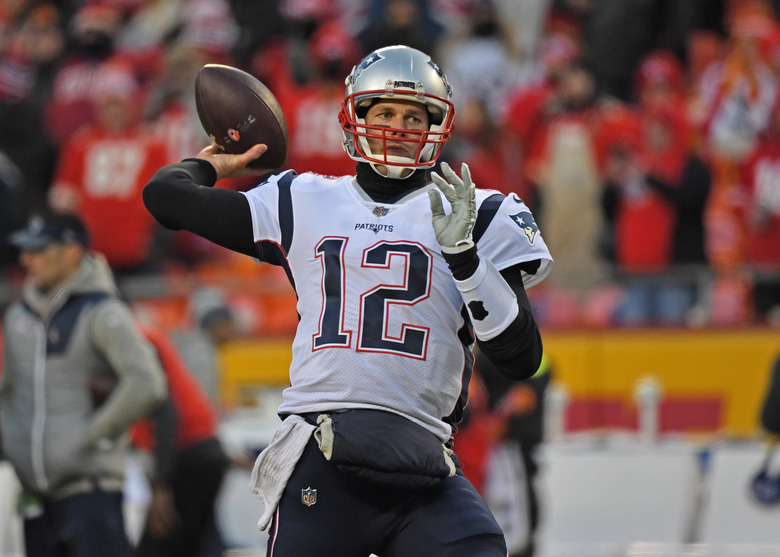Football With Frobenius: The Super Bowl Math Problem
With the Super Bowl just around the corner, athletes and fans of the world have their focus fixed firmly on the big game. But for _math_letes, the big game might bring to mind a little problem relating to the possible scores in a game of football. With only limited options for the amount of points that you can score, some totals simply cannot be reached, but what is the highest? If you want to know what links coins, football and McDonald's chicken nuggets, this is a problem for you.
The Super Bowl Math Problem
The Super Bowl Math Problem
The problem involves the possible scores either the Los Angeles Rams or the New England Patriots could possibly achieve on Sunday without a safety or a two-point conversion. In other words, the allowable ways to increase their scores are 3-point field goals and 7-point touchdowns. So, without safeties, you can't achieve a score of 2 points in a game with any combination of 3s and 7s. Similarly, you can't achieve a score of 4 either, nor can you score 5.
The question is: What's the highest score that can't be achieved with only 3-point field goals and 7-point touchdowns?
Of course, touchdowns without a conversion are worth 6, but since you can get to that with two field goals anyway, it doesn't matter for the problem. Also, since we're dealing with math here, you don't have to worry about the specific team's tactics or even any limits on their ability to score points.
Try to solve this yourself before moving on!
Finding a Solution (the Slow Way)
Finding a Solution (the Slow Way)
This problem has some complex mathematical solutions (see Resources for full details, but the main result will be introduced below), but it's a good example of how this isn't needed to find the answer.
All you have to do to find a brute-force solution is to simply try each of the scores in turn. So we know you can't score 1 or 2, because they're less than 3. We already established that 4 and 5 aren't possible, but 6 is, with two field goals. After 7 (which is possible), can you score 8? Nope. Three field goals gives 9, and a field goal and a converted touchdown makes 10. But you can't get 11.
From this point onwards, a little work shows that:
\(\begin{aligned} 3 × 4 &= 12\)
\(7 + (3 × 2) &= 13\)
\(7 × 2 &= 14\)
\(3 × 5 &= 15\)
\(7 + (3 × 3) &= 16\)
\((7 × 2) + 3 &= 17 \end{aligned}\)
And in fact, you can keep going like this for as long as you want. The answer seems to be 11. But is it?
The Algebraic Solution
The Algebraic Solution
Mathematicians call these problems "Frobenius coin problems." The original form related to coins, such as: If you only had coins valued 4 cents and 11 cents (not real coins, but again, that's math problems for you), what is the largest amount of money you couldn't produce.
The solution, in terms of algebra, is that with one score worth p points and one score worth q points, the highest score you can't get (N) is given by:
\(N = pq \; – \;(p + q)\)
So plugging in the values from the Super Bowl problem gives:
\(\begin{aligned} N &= 3 × 7\; – \;(3 + 7)\)
\(&= 21 \;–\; 10\)
\(&= 11
\end{aligned}\)
Which is the answer we got the slow way. So what if you could only score touchdowns with no conversion (6 points) and touchdowns with one-point conversions (7 points)? See if you can use the formula to work it out before reading on.
In this case, the formula becomes:
\(\begin{aligned} N &= 6 × 7\; – \;(6 + 7)\)
\(&= 42 \;–\; 13\)
\(&= 29
\end{aligned}\)
The Chicken McNugget Problem
The Chicken McNugget Problem
So the game is over and you want to reward the winning team with a trip to McDonald's. But they only sell McNuggets in boxes of 9 or 20. So what's the highest number of nuggets you can't buy with these (outdated) box numbers? Try to use the formula to find the answer before reading on.
Since
\(N = pq \; – \;(p + q)\)
And with p = 9 and q = 20:
\(\begin{aligned} N &= 9 × 20\; – \;(9 + 20)\)
\(&= 180 \;–\; 29\)
\(&= 151
\end{aligned}\)
So provided you were buying more than 151 nuggets – the winning team will probably be pretty hungry, after all – you could buy any number of nuggets you wanted with some box combination.
You might be wondering why we've only covered two-number versions of this problem. What if we incorporated safeties, or if McDonalds sold three sizes of nugget boxes? There is no clear formula in this case, and while most versions of it can be solved, some aspects of the question are completely unsolved.
So maybe when you're watching the game or eating bite-sized bits of chicken you can claim you're trying to solve an open problem in mathematics – it's worth a try to get out of chores!
Cite This Article
MLA
Johnson, Lee. "Football With Frobenius: The Super Bowl Math Problem" sciencing.com, https://www.sciencing.com/football-with-frobenius-the-super-bowl-math-problem-13716951/. 30 January 2019.
APA
Johnson, Lee. (2019, January 30). Football With Frobenius: The Super Bowl Math Problem. sciencing.com. Retrieved from https://www.sciencing.com/football-with-frobenius-the-super-bowl-math-problem-13716951/
Chicago
Johnson, Lee. Football With Frobenius: The Super Bowl Math Problem last modified August 30, 2022. https://www.sciencing.com/football-with-frobenius-the-super-bowl-math-problem-13716951/
